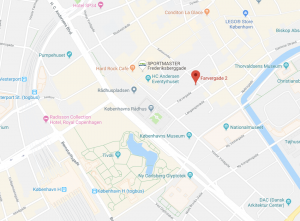If you have been referred to treatment for hemorrhoids, there will first be a brief examination in order to determine the extent of the problem.
Hemorrhoids have several different symptoms, however there are many potential diseases in the rectum. Thus, it may be easy to confuse hemorrhoids with other conditions if you do not have the expertise of a gastrointestinal surgeon specializing in rectal disorders.
The following are the symptoms most commonly associated with hemorrhoids:
- Pain
- Itching
- Bleeding
- Difficulty maintaining hygiene
- Cosmetic
- Constipation
Several diseases can result in the above, including:
- Internal hemorrhoids (hemorrhoids within)
- External hemorrhoids (hemorrhoids outside)
- Mucosaprolabs (mucosal polyps)
- Condylomes (genital warts)
- Proctitis (inflammation of the mucous membrane)
- Perianal abscess (infectious swelling)
- Perianal fistula (inflammatory disorders)
- Polyps various variants (benign tumors)
- Perianal hematoma (blood collection)
- Cancer ani (cancer of the anus)
- Cancer recti (cancer of the rectum)
- Various skin diseases (psoriasis, etc. Bowen, dysplasia, lichen etc)
- Pilonidal cyst / abscess (hairy cyst)
- Gynecologic disorders: gonorrhea, syphilis and chlamydia
The treatment, of course, depends on the type and extent of the disease.
The treatments may include:
- Cream
- Rubber-band treatment (mcgivney ligature)
- Operation with local anesthesia
- Various operations with full anesthesia
- Treatment with injection (sclerosis)
1-2 hours before your consultation, you should clean the rectum using an enema. You can come to the clinic to obtain the enema, or you can buy it at the pharmacy. It is called “Fleet”, “klyx” og “cleenema” and it will have to be the big one – 240 ml.
Keep the liquid inside of your rectum for approximately 5-10 minutes. This process cleanses the rectum and both fluid and feces will subsequently come out. Therefore you should be in the immediate vicinity of a toilet that you can use undisturbed.
A thorough guide to use the enema properly comes with the liquid.
When you are called to the doctor, you will be asked to take off your clothes and undergarments.
Then lie down on the examination table on your left side. You will be provided a cloth for cover.
First the doctor examines the external condition of the rectum. Then the doctor uses local anesthetic gel to examine the internal condition with a finger (exploratio rectalis).
At the end of the study, the rectum and lower part of the large intestine are examined with an endoscope. This is known as a “sigmoideoscopy”.
Once the examination is over, you will be presented with a treatment plan.
You can resume normal food intake immediately after the examination.


